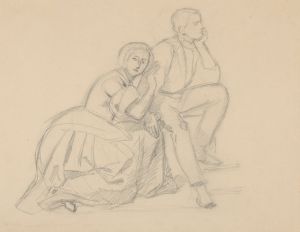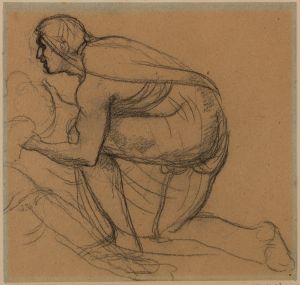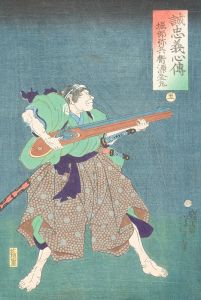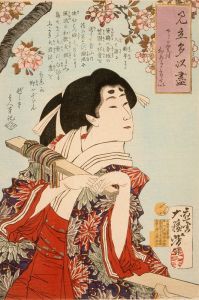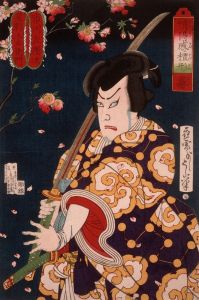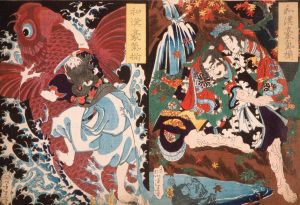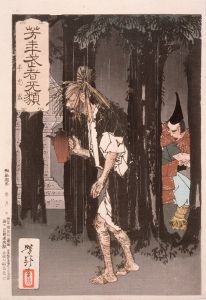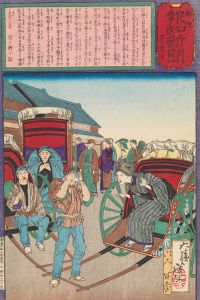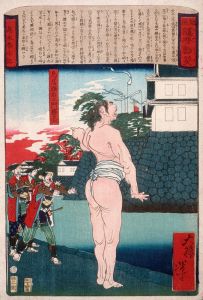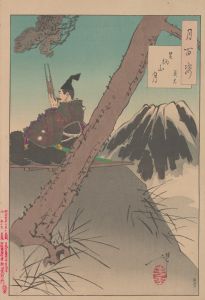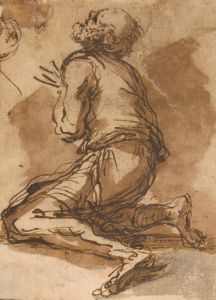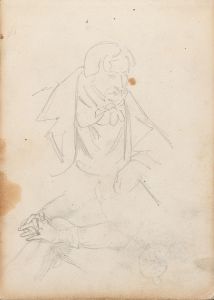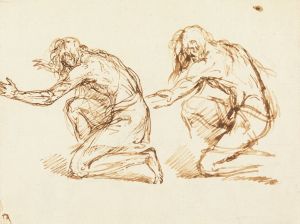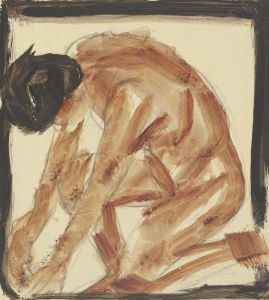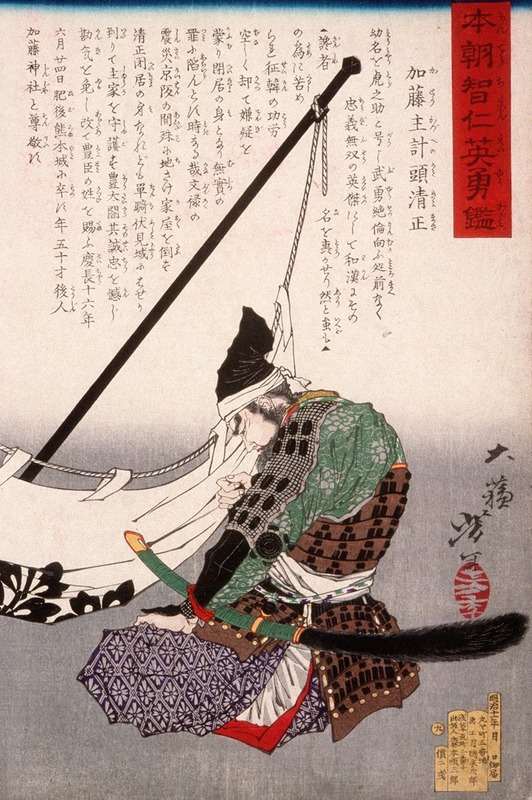
Katō Kazue no kami Kiyomasa Kneeling by a Banner
A hand-painted replica of Tsukioka Yoshitoshi’s masterpiece Katō Kazue no kami Kiyomasa Kneeling by a Banner, meticulously crafted by professional artists to capture the true essence of the original. Each piece is created with museum-quality canvas and rare mineral pigments, carefully painted by experienced artists with delicate brushstrokes and rich, layered colors to perfectly recreate the texture of the original artwork. Unlike machine-printed reproductions, this hand-painted version brings the painting to life, infused with the artist’s emotions and skill in every stroke. Whether for personal collection or home decoration, it instantly elevates the artistic atmosphere of any space.
"Katō Kazue no kami Kiyomasa Kneeling by a Banner" is a woodblock print created by the renowned Japanese artist Tsukioka Yoshitoshi. Yoshitoshi, who lived from 1839 to 1892, is celebrated for his innovative approach to ukiyo-e, a genre of Japanese woodblock prints that flourished between the 17th and 19th centuries. His works are known for their dynamic compositions, vivid colors, and the ability to capture the complexities of human emotions and historical narratives.
This particular print features Katō Kiyomasa, a prominent samurai and military commander during the late Sengoku period and early Edo period in Japan. Kiyomasa was born in 1562 and became one of the most trusted generals of Toyotomi Hideyoshi, a key figure in the unification of Japan. He is best known for his role in the Japanese invasions of Korea (1592–1598), where he gained a reputation for his bravery and strategic acumen.
In the print, Kiyomasa is depicted kneeling by a banner, a pose that suggests a moment of contemplation or reverence. The banner itself is a significant element, as banners were often used in battle to signify the presence of a commander and to rally troops. The inclusion of the banner in the artwork may symbolize Kiyomasa's leadership and his dedication to his lord and cause.
Yoshitoshi's portrayal of Kiyomasa is consistent with his broader artistic themes, which often explored historical and legendary figures from Japan's past. His works frequently depicted scenes of heroism, loyalty, and the supernatural, reflecting the cultural and social changes occurring in Japan during the Meiji Restoration, a period of rapid modernization and Westernization.
The print is part of Yoshitoshi's series "Tsuki hyakushi" (One Hundred Aspects of the Moon), which was published between 1885 and 1892. This series is considered one of Yoshitoshi's masterpieces and showcases his mature style, characterized by a blend of traditional Japanese aesthetics and Western influences. Each print in the series features a story or character associated with the moon, drawing on themes from history, literature, and folklore.
Yoshitoshi's work, including "Katō Kazue no kami Kiyomasa Kneeling by a Banner," played a crucial role in the revival of the ukiyo-e tradition during a time when it was facing decline due to the advent of photography and Western art forms. His prints are highly valued for their artistic quality and historical significance, offering insights into the cultural and political landscape of Japan during the late 19th century.
Today, Yoshitoshi's prints are held in high regard by collectors and art historians alike, with many of his works housed in prestigious museums and private collections around the world. "Katō Kazue no kami Kiyomasa Kneeling by a Banner" remains a testament to Yoshitoshi's skill as an artist and his ability to capture the essence of Japan's rich historical tapestry.





